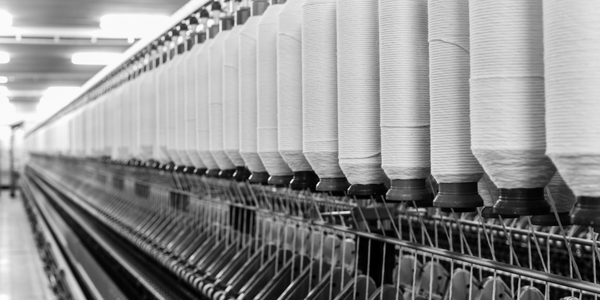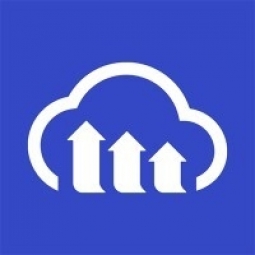公司规模
Large Corporate
地区
- America
国家
- United States
产品
- Cloudinary
技术栈
- Workarea
- Ruby on Rails
- Amazon server
实施规模
- Enterprise-wide Deployment
影响指标
- Customer Satisfaction
- Brand Awareness
技术
- 平台即服务 (PaaS) - 连接平台
适用行业
- 服装
- 零售
适用功能
- 销售与市场营销
- 商业运营
用例
- 供应链可见性(SCV)
- 零售店自动化
服务
- 云规划/设计/实施服务
关于客户
Reformation 是一家总部位于洛杉矶的时尚品牌,其宗旨是“打造不会破坏环境的绝妙服装”。其可持续女装和配饰的设计流程始于设计师思考客户现在真正想穿什么。大多数时装的设计都在发布前 12 到 18 个月完成,而 Reformation 只需大约一个月便能将草图变成一件连衣裙。该公司采购最美丽、最可持续的面料,以快速将这些设计变为现实。Reformation 在加利福尼亚州、佛罗里达州、伊利诺伊州、马萨诸塞州、纽约州、德克萨斯州和华盛顿特区设有实体店,并计划每年开设 5 到 8 家新店。这些店面旨在展示公司的产品,但迄今为止,其大部分业务都是在线进行的。
挑战
Reformation 是一家总部位于洛杉矶的时尚品牌,主要专注于电子商务,超过一半的客户使用移动设备访问其网站。该公司正在使用其电子商务平台 Workarea 附带的开箱即用内置功能。它利用可自定义的 RubyGem Dragonfly 在 Ruby on Rails 中生成缩略图。但是,这种解决方案带来了问题,因为它要求每个网站访问者都以相同的分辨率下载相同的图像。这要么导致高分辨率屏幕上的品牌和产品图像质量出现问题,要么要求客户使用不必要的带宽,具体取决于他们用于访问网站的平台或设备。此外,该公司还在网站上试验视频,通过 Vimeo 集成剪辑。但是,性能不稳定,并没有达到它希望为访问者提供的高质量体验。
解决方案
Reformation 于 2018 年 10 月将 Cloudinary 整合到其工作流程中,以支持从照片拍摄到产品发布的快速周转。创意团队将最终图像上传到 FTP 站点,根据样式、颜色和其他功能识别产品。开发团队设置了一个 cron 作业来定期检查这些图像,然后创建必要的数据库连接并上传到 Reformation 的 Amazon 服务器。Cloudinary 在后台用于上传高分辨率原件并向每位访问者提供优化的响应版本,无论他们是通过网络还是移动设备访问网站。Reformation 无需在主页、产品列表页面和产品详细信息页面上手动为每张图片指定断点,而是使用 Cloudinary 根据设备像素比 (DPR) 和查看设备的视口自动调整每张图片的分辨率和像素密度。除了这些在产品列表和产品详细信息页面上展示的产品图片外,Reformation 还利用 Cloudinary 来优化其内容图片。内容图像是营销图像,通常带有文本叠加,通过 Reformation 的内容管理系统进行处理。在看到 Cloudinary 在优化图像方面发挥的作用后,Reformation 也将其用于视频。这个过程也是自动化的。电子商务销售团队只需将每个视频上传到 Workarea,然后 Cloudinary 确保视频传输流畅,不会出现缓冲中断,无论客户使用什么设备或带宽。
运营影响
数量效益

Case Study missing?
Start adding your own!
Register with your work email and create a new case study profile for your business.
相关案例.

Case Study
Fire Alarm System and Remote Monitoring Sytem
Fire alarm systems are essential in providing an early warning in the event of fire. They help to save lives and protect property whilst also fulfilling the needs of insurance companies and government departments.Fire alarm systems typically consist of several inter-linked components, such as smoke detectors, heat detector, carbon monoxide, manual call points, sounders, alarm and buzzer. The fire alarm system should give immediate information in order to prevent the fire spread and protect live and property.To get maximum protection a shoe manufacturer in Indonesia opted for a new fire alarm system to monitor 13 production sites spread over 160 hectars. Although the company had an existing fire alarm system, it could not be monitored remotely.It was essential that the new system would be able to be monitored from a central control room. It needed to be able to connect to the existing smoke detector and manual call point. Information should be easily collected and passed on to the Supervisory Control and Data Acquisition (SCADA) system. Furthermore, the system should have several features such as alarm management, auto reporting, being connected to many client computers without additional cost, and run 24/7 without fails. The company also needed a system which could be implemented without changing the architecture of the existing fire alarm system.

Case Study
IoT Applications and Upgrades in Textile Plant
At any given time, the textile company’s manufacturing facility has up to 2,000 textile carts in use. These carts are pushed from room to room, carrying materials or semi-finished products. Previously, a paper with a hand-written description was attached to each cart. This traditional method of processing made product tracking extremely difficult. Additionally, making sure that every cart of materials or semi-finished products went to its correct processing work station was also a problem. Therefore, the company desired an intelligent solution for tracking assets at their factories. They also wanted a solution that would help them collect process data so they could improve their manufacturing efficiency.

Case Study
Improving Production Line Efficiency with Ethernet Micro RTU Controller
Moxa was asked to provide a connectivity solution for one of the world's leading cosmetics companies. This multinational corporation, with retail presence in 130 countries, 23 global braches, and over 66,000 employees, sought to improve the efficiency of their production process by migrating from manual monitoring to an automatic productivity monitoring system. The production line was being monitored by ABB Real-TPI, a factory information system that offers data collection and analysis to improve plant efficiency. Due to software limitations, the customer needed an OPC server and a corresponding I/O solution to collect data from additional sensor devices for the Real-TPI system. The goal is to enable the factory information system to more thoroughly collect data from every corner of the production line. This will improve its ability to measure Overall Equipment Effectiveness (OEE) and translate into increased production efficiencies. System Requirements • Instant status updates while still consuming minimal bandwidth to relieve strain on limited factory networks • Interoperable with ABB Real-TPI • Small form factor appropriate for deployment where space is scarce • Remote software management and configuration to simplify operations

Case Study
Digital Retail Security Solutions
Sennco wanted to help its retail customers increase sales and profits by developing an innovative alarm system as opposed to conventional connected alarms that are permanently tethered to display products. These traditional security systems were cumbersome and intrusive to the customer shopping experience. Additionally, they provided no useful data or analytics.

Case Study
How Sirqul’s IoT Platform is Crafting Carrefour’s New In-Store Experiences
Carrefour Taiwan’s goal is to be completely digital by end of 2018. Out-dated manual methods for analysis and assumptions limited Carrefour’s ability to change the customer experience and were void of real-time decision-making capabilities. Rather than relying solely on sales data, assumptions, and disparate systems, Carrefour Taiwan’s CEO led an initiative to find a connected IoT solution that could give the team the ability to make real-time changes and more informed decisions. Prior to implementing, Carrefour struggled to address their conversion rates and did not have the proper insights into the customer decision-making process nor how to make an immediate impact without losing customer confidence.








